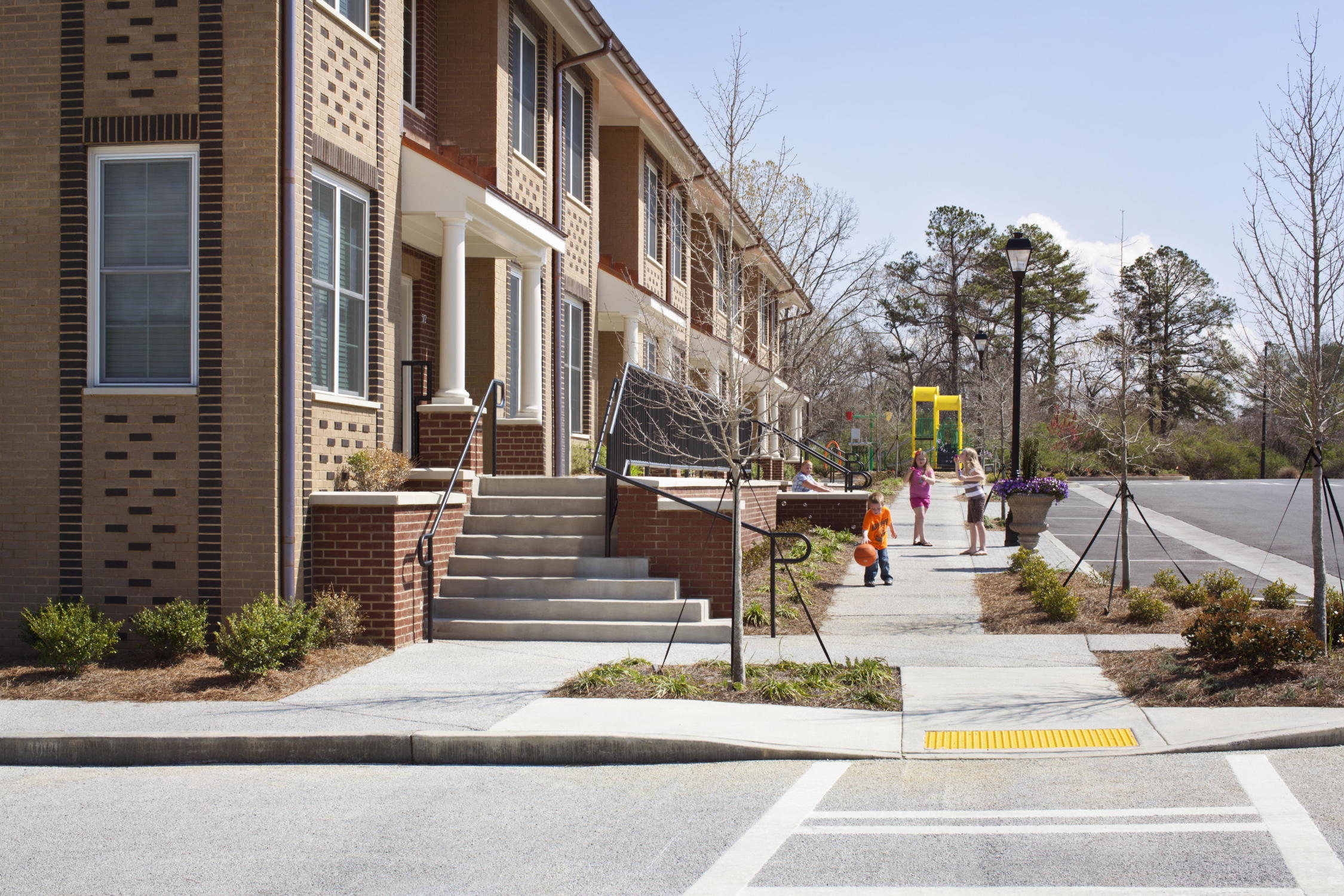
By Dees Stribling, Contributing Editor Multi-Housing News
Rome, Ga.—The Northwest Georgia Housing Authority (NWGHA) recently completed Village Green, a 10-unit public housing project designed with an unusually large number of sustainable features for an affordable property. The property is expected to achieve Enterprise Green Community Certification, Energy Star certification and LEED for Homes Silver certification. It will also be the first public housing authority project in Georgia to become LEED certified.
Among other features, the building’s north/south site orientation maximizes daylight and minimizes solar gain, with the south-facing roof monitors providing light for the stairwells, while the north-facing roof monitors harvest daylight for the bathrooms, reducing the need for electricity during daylight hours. Shading strategies include roof overhangs and copper porch roof canopies, and the units are designed for cross ventilation, with all reachable windows operable and including screens. The units feature fiberglass double hung, low-E insulated windows; Energy Star qualified lighting, ceiling fans and appliances; low-flow water fixtures and WaterSense toilets; and low VOC finishes.
“I don’t think you can separate true long-term affordability from sustainability,” Eric Brock, the architecture firm Lord, Aeck & Sargent’s principal in charge of the Village Green project, tells MHN. “Walkable, transit-oriented mixed-use communities with energy-efficient homes substantially reduce transportation costs, create energy savings, reduce greenhouse gas emissions and enhance well-being of all residents. HUD understands this and has made it a policy to incorporate sustainability principles into all of the department’s programs.”
The complex includes eight 1,450-square-foot townhouse-style, two-story walk-up units with three bedrooms and two baths each; and two 1,150-square-foot, two-bedroom stacked flats. One of the two smaller flats was designed according to the Uniform Federal Accessibility Standards, a standard for the construction of government buildings under the Americans with Disabilities Act.
Village Green was primarily funded by an American Recovery and Reinvestment Act (the 2009 federal stimulus) competitive grant of about $1.7 million from HUD. The NWGHA provided an additional $350,000 from its annual operating budget for improvements to the site.
